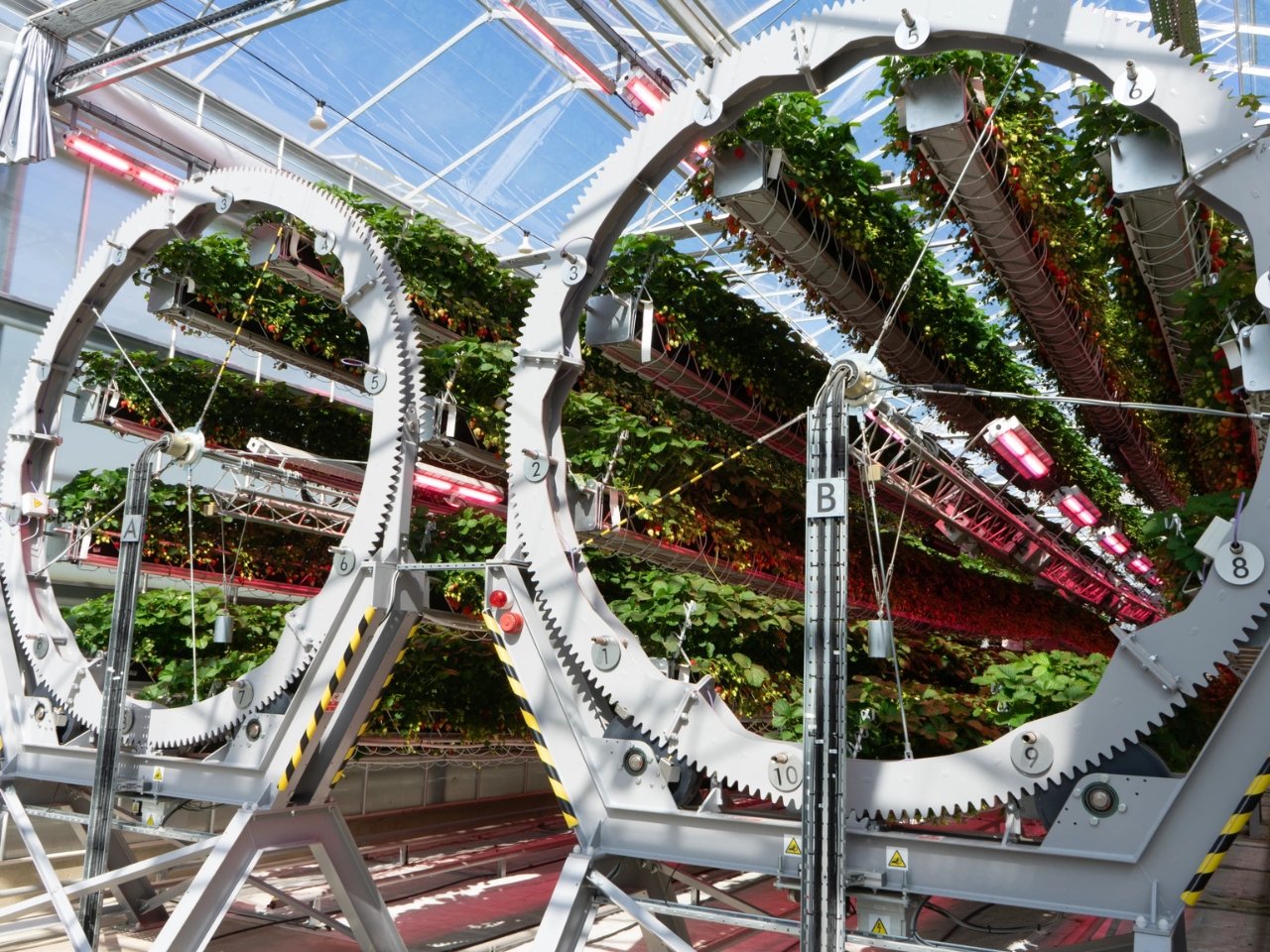When most people think of Dyson, vacuum cleaners and air purifiers probably come to mind. But Dyson has also ventured into the world of agriculture, bringing its signature innovation to strawberry farming. It might seem strange and unrelated to their original business, but James Dyson himself thinks it’s a natural fit, since “growing things is like making things.” The company is focusing on how to use technology to make processes more efficient and to improve the quality of what they produce.
At their sprawling glasshouse in Lincolnshire, UK, a fleet of remarkable robots and machines is transforming how strawberries are grown, protected, and picked. The heart of Dyson’s strawberry operation is a set of enormous wheels, each weighing around 500 kilograms (about 1,100 pounds). These wheels are no ordinary farm equipment. Measuring 24 meters long and 5 meters tall (roughly 78 by 16 feet), they support row upon row of strawberry plants. The wheels slowly rotate, ensuring every plant gets optimal sunlight as they move through the air. Dyson engineer Rob Kyle has called this “the biggest rig Dyson’s ever made,” and just one look at the glasshouse makes it clear why.
Designer: Dyson Farming
This rotating design not only ensures even light exposure but also allows Dyson to grow more strawberries in less space, maximizing yield while minimizing the farm’s physical footprint. Keeping such a vast number of plants healthy is no small feat, so Dyson relies on a team of specialized robots. UV-emitting robots regularly patrol the aisles, bathing the plants in ultraviolet light strong enough to kill mold and mildew on the leaves without damaging the strawberries themselves. This means fewer chemicals are needed, which is good for both the environment and consumers.
Another robot, the distributor bot, releases beneficial insects onto the plants. These tiny bugs are natural predators of aphids and other pests that might otherwise damage the crops. By using this biological pest control, Dyson further reduces the need for synthetic pesticides, making their strawberries even more eco-friendly. When the strawberries are perfectly ripe, yet another group of high-tech machines swings into action. Sixteen robotic arms delicately pick the fruit, using careful movements to avoid bruising or damaging the strawberries. This automated picking process ensures that only the best strawberries reach the packaging area, ready for market.
Dyson Farming’s glasshouse is as much about sustainability as it is about technology. Power comes from an onsite anaerobic digester, which breaks down grain to produce gas that runs turbines for electricity. The excess heat generated helps keep the glasshouse warm, and the leftover material from the digester, called digestate, is returned to nearby fields as organic fertilizer. Rainwater is captured from the massive 760-meter-long (about 2,500 feet) roof to hydrate the plants, and the facility relies mainly on natural sunlight, using minimal artificial light only when necessary.
This approach allows Dyson’s glasshouse to produce a whopping 1,250 tonnes of strawberries every year. Dyson’s giant wheeled robots and their robotic helpers are reshaping what’s possible in agriculture. With technology, sustainability, and efficiency working in harmony, the future of strawberry farming is looking bright and delicious.
The post Giant wheels and robots help Dyson farm strawberries in the UK first appeared on Yanko Design.

